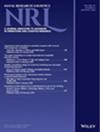并行机器上的次模化批处理调度
IF 2.1
4区 管理学
Q3 OPERATIONS RESEARCH & MANAGEMENT SCIENCE
引用次数: 0
摘要
本文研究了一个由真空热处理引发的亚模块批量调度问题。批量处理时间由一个单调非递减亚模块函数来表示,该函数具有边际增益递减的特性。问题的目标是最小化工期。我们证明了该问题在单机上的 NP 难度,并找到了一种多项式时间近似算法,其最坏情况下的性能比严格小于并机上的该问题。我们引入了一个有界区间,利用两个参数(即总曲率和量化指标)对批处理时间进行建模。基于边际增益递减特性和两个参数,我们对全批量最长处理时间算法和最长处理时间贪婪算法进行了系统分析,并提出了这两种算法在亚模态批量调度问题上的批量容量约束实例。此外,我们还证明了现有批处理模型(包括并行批处理、串行批处理和混合批处理模型)的批处理时间函数的亚模态性。我们将现有批处理模型中的最坏情况性能比与我们在亚模块批处理模型中的研究成果进行了比较。在大多数情况下,我们的工作所推导出的最坏情况性能比与经过定制检验的已知最坏情况性能比相当。本文章由计算机程序翻译,如有差异,请以英文原文为准。
Submodular batch scheduling on parallel machines
This article studies a submodular batch scheduling problem motivated by the vacuum heat treatment. The batch processing time is formulated by a monotone nondecreasing submodular function characterized by decreasing marginal gain property. The objective is to minimize the makespan. We show the NP‐hardness of the problem on a single machine and of finding a polynomial‐time approximation algorithm with the worst‐case performance ratio strictly less than for the problem on parallel machines. We introduce a bounded interval to model the batch processing time using two parameters, that is, the total curvature and the quantization indicator. Based on the decreasing marginal gain property and the two parameters, we make a systematic analysis of the full batch longest processing time algorithm and the longest processing time greedy algorithm, and propose the instances with the bound of batch capacity for these two algorithms for the submodular batch scheduling problem. Moreover, we prove the submodularity of batch processing time function of the existing batch models including the parallel batch, serial batch, and mixed batch models. We compare the worst‐case performance ratios in the existing batch models with those deduced from our work in the submodular batch model. In most situations, the worst‐case performance ratios deduced from our work are comparable to the best‐known worst‐case performance ratios with tailored examinations.
求助全文
通过发布文献求助,成功后即可免费获取论文全文。
去求助
来源期刊

Naval Research Logistics
管理科学-运筹学与管理科学
CiteScore
4.20
自引率
4.30%
发文量
47
审稿时长
8 months
期刊介绍:
Submissions that are most appropriate for NRL are papers addressing modeling and analysis of problems motivated by real-world applications; major methodological advances in operations research and applied statistics; and expository or survey pieces of lasting value. Areas represented include (but are not limited to) probability, statistics, simulation, optimization, game theory, quality, scheduling, reliability, maintenance, supply chain, decision analysis, and combat models. Special issues devoted to a single topic are published occasionally, and proposals for special issues are welcomed by the Editorial Board.
 求助内容:
求助内容: 应助结果提醒方式:
应助结果提醒方式:


